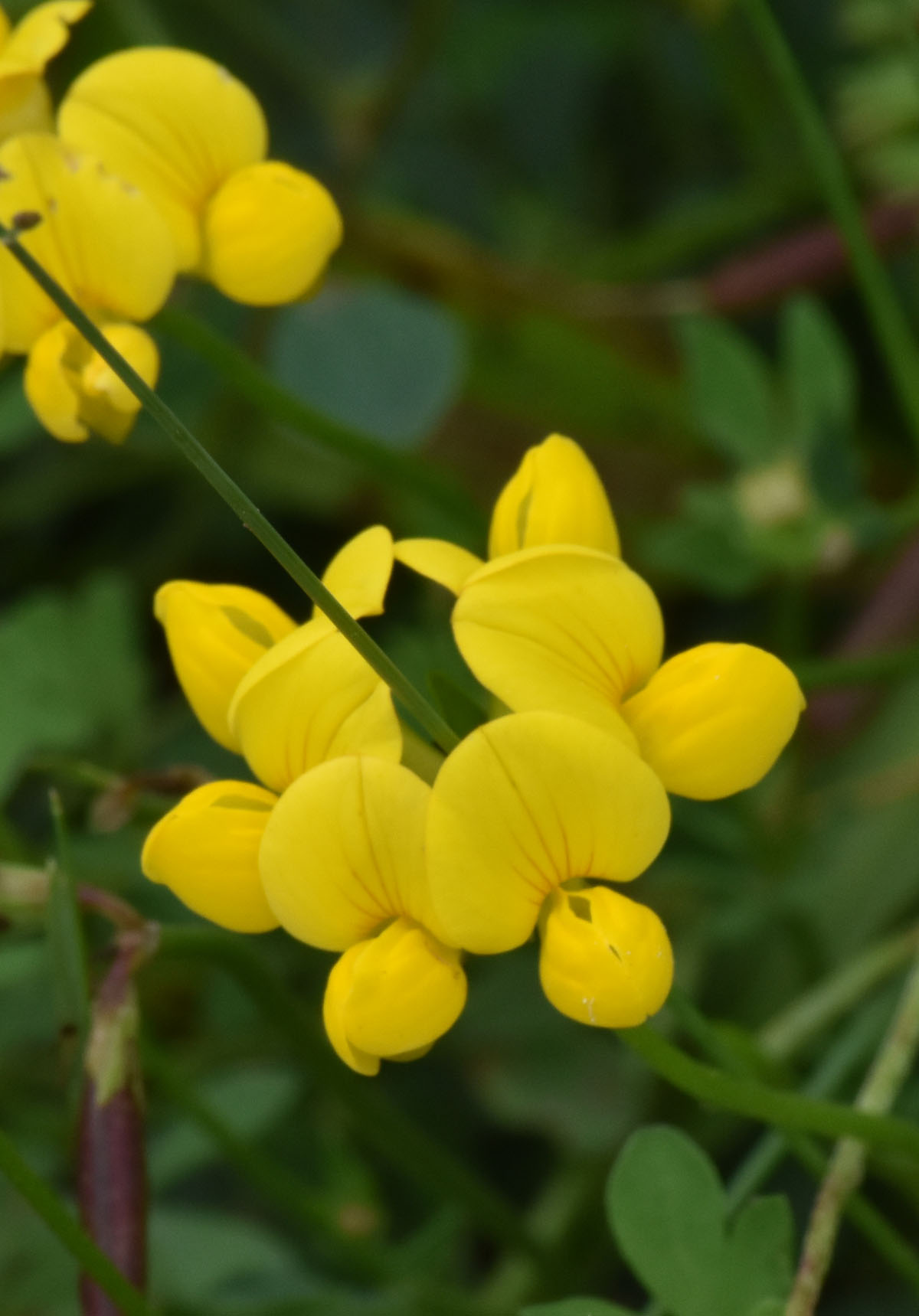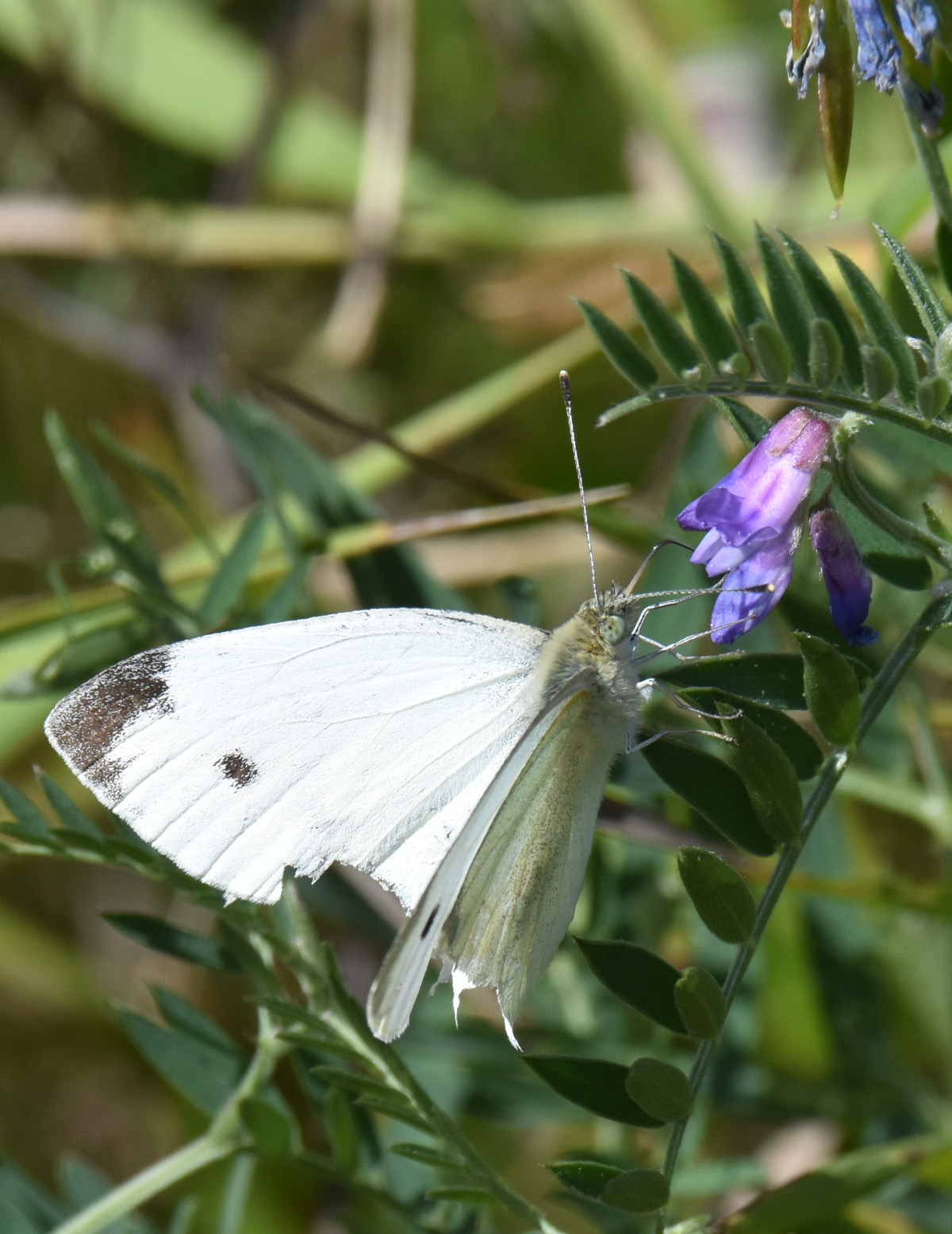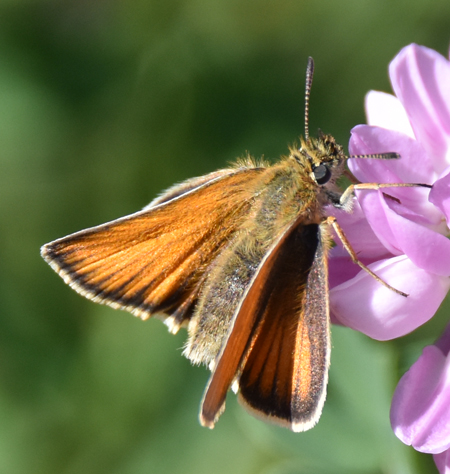All spring I have been on the lookout for a “New Blue” in my neighbourhood meadow. I read a report by B. Curry that he had seen a European Common Blue butterfly in Oakville on May 25. They have been reported from sites in Toronto for a couple of years. I really wanted to find the first ones in my neighbourhood–but I was actually at least the second person to see them here. One July morning when I visited my nearby meadow, I met Mr. Moss who was taking photos of a fresh female European Common Blue.
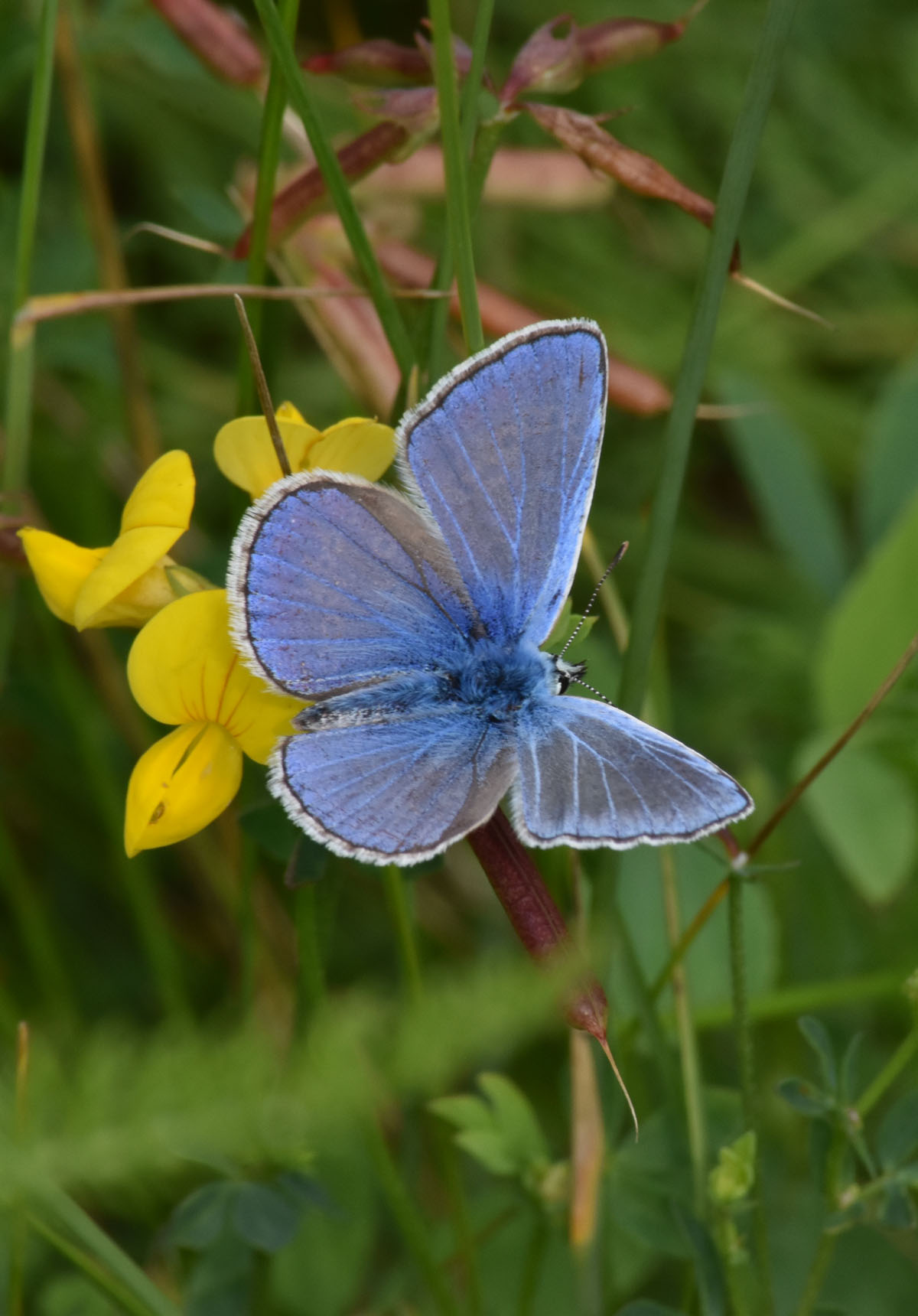
This is a male European Common Blue.
What Is a European Common Blue Butterfly and What Is It Doing in Canada?
We have several small native blue butterflies in south Mississauga. These include Azures, Silvery Blues and Eastern Tailed-blues. Their caterpillars each eat different plants. Their males all have a mostly-blue upper side but the patterns on the undersides of the wings vary quite a bit.
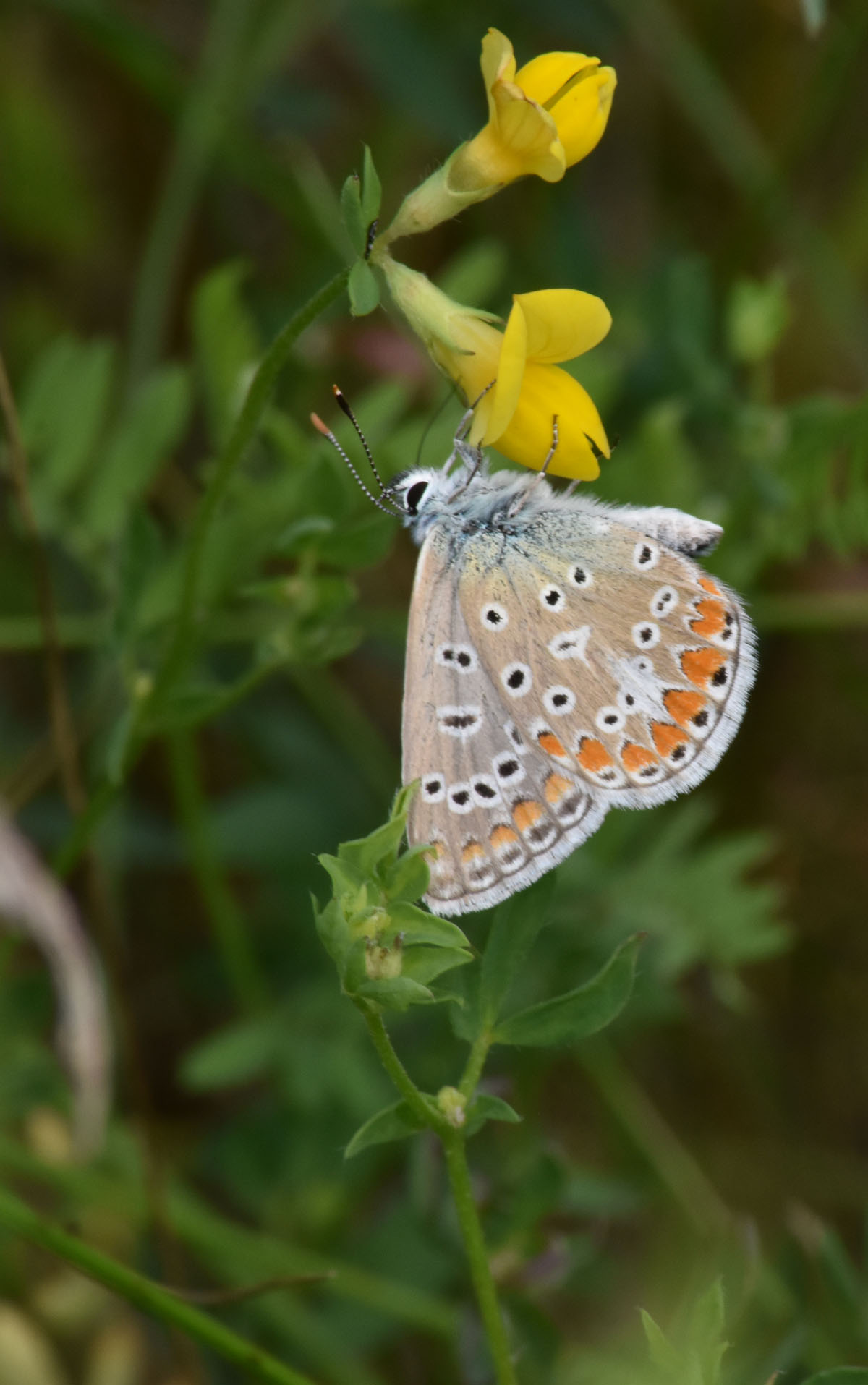
The orange cones combined with the white outlines around the black markings make it pretty easy for me to tell this is a European Common Blue as the local Azures and other Blues don’t have this combination of markings.
In 2005, butterfly watchers near Mirabel Airport in Quebec reported seeing a new Blue: a European Common Blue which normally is found in Britain and Europe. It was believed that the butterflies arrived in Canada courtesy of a plane.
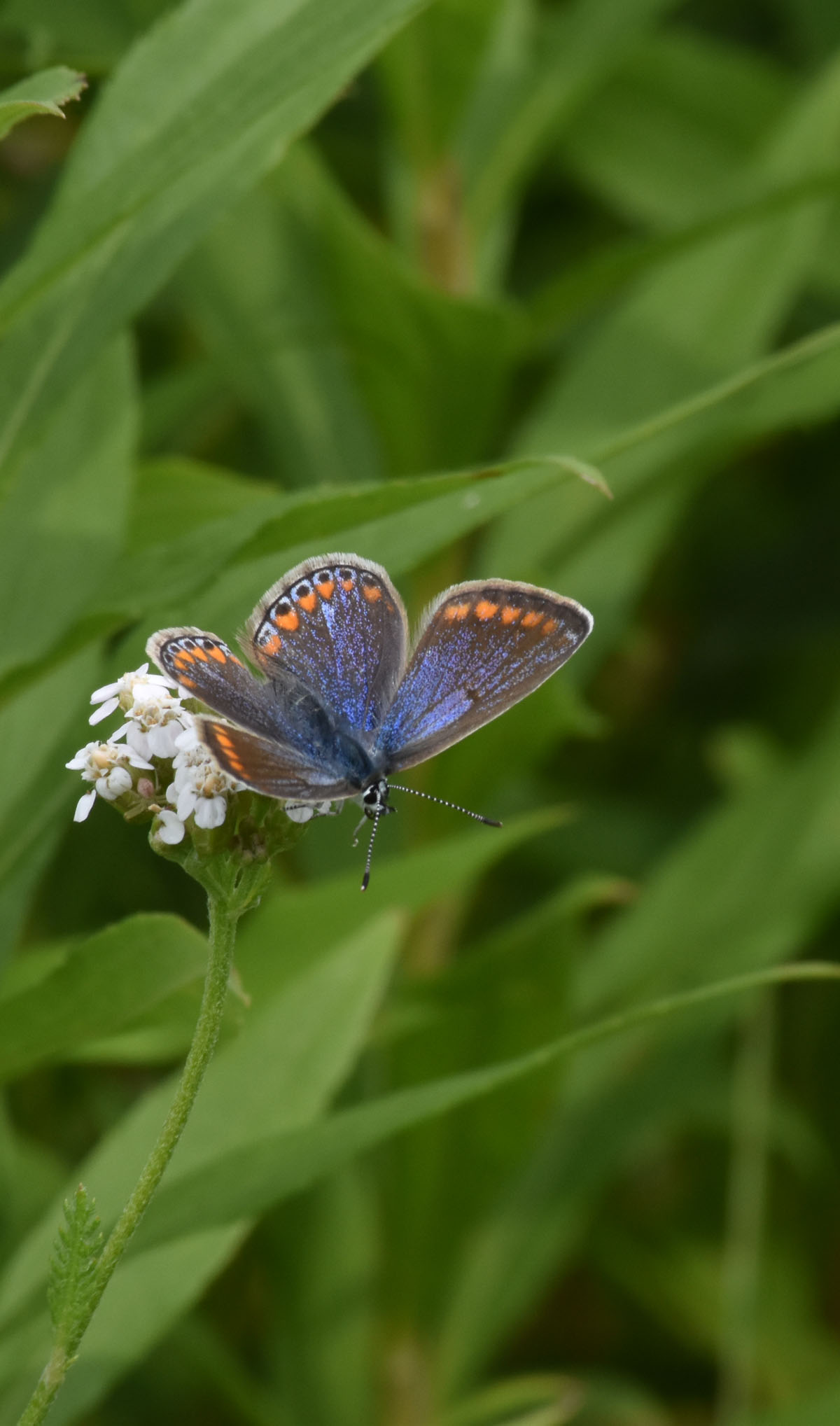
At least one female European Common Blue, like this one, must have landed in Quebec!
Gradually, these little Blues have been spreading. Like many insects, plants, and even some birds, they seem to spread first along highways and railway lines and then disperse further out.
In Europe, these Common Blues’ caterpillars often eat a clover-like plant with bright yellow flowers called Bird’s-foot Trefoil.
And luckily for Canadian native insects, here in Canada, these European Common Blues’ caterpillars are still happy to grow up eating Bird’s-foot Trefoil. Yes, our “introduced alien” butterflies are eating the “introduced alien” plant from their homeland.
What Is Bird’s-foot Trefoil and Where Did It Come From?
If you’ve noticed a lot of small bright yellow flowers growing along the roads or paths in southern Ontario, you may have noticed Bird’s-foot Trefoil. It is thriving and spreading rapidly. It doesn’t mind being mowed.
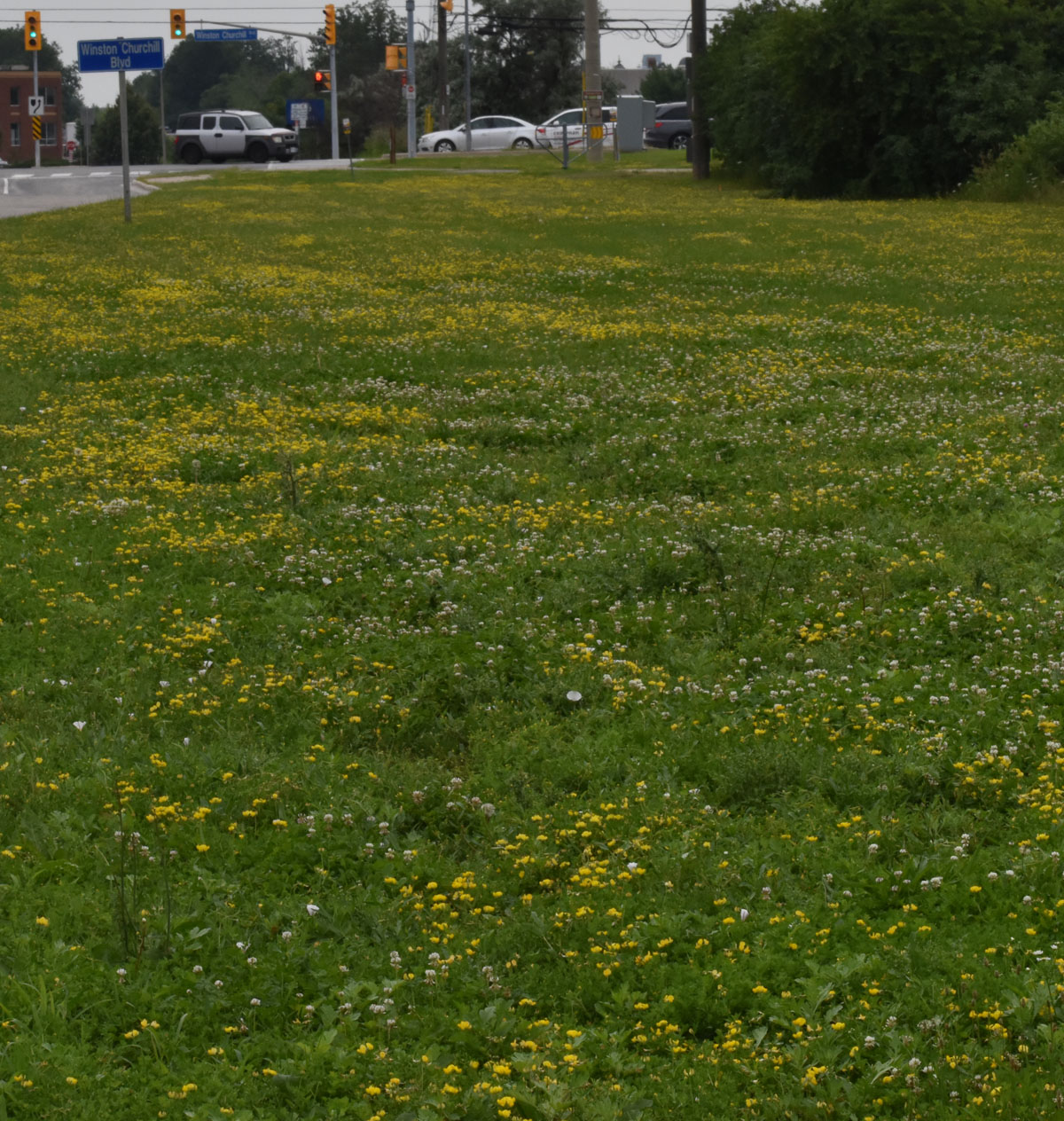
Yep, all that yellow is Bird’s-foot Trefoil !
It is a plant that arrived from Europe and like many others has spread far and wide in North America.
Are There Other European Butterflies in Ontario?
Other “introduced alien” plants in the meadow near me include Queen Anne’s Lace, Chicory (Bachelor’s Buttons), Ox-eye Daisy, Crown Vetch, Tufted Vetch and Teasel. I think both the Bird’s-foot Trefoil and the European Common Blues likely feel right at home in Mississauga!
Cabbage White butterflies are also from Europe, by the way. European Skippers too.
For what it’s worth, Monarch butterflies have also been introduced to other countries around the world.
I enjoyed seeing these new Blues and as long as they keep eating an introduced alien plant and don’t impact the lives of our native plants and insects, I wish them welcome.
Related Reading
- Searching for Butterflies In a Hay Field
- Matching Butterflies to Their Names
- University of Ottawa Studies European Common Blue’s Arrival and Spread in Canada
Join In
Are you a butterfly fan? If so, are you looking forward to seeing this pretty “New” Blue? Please share your view with a comment.

